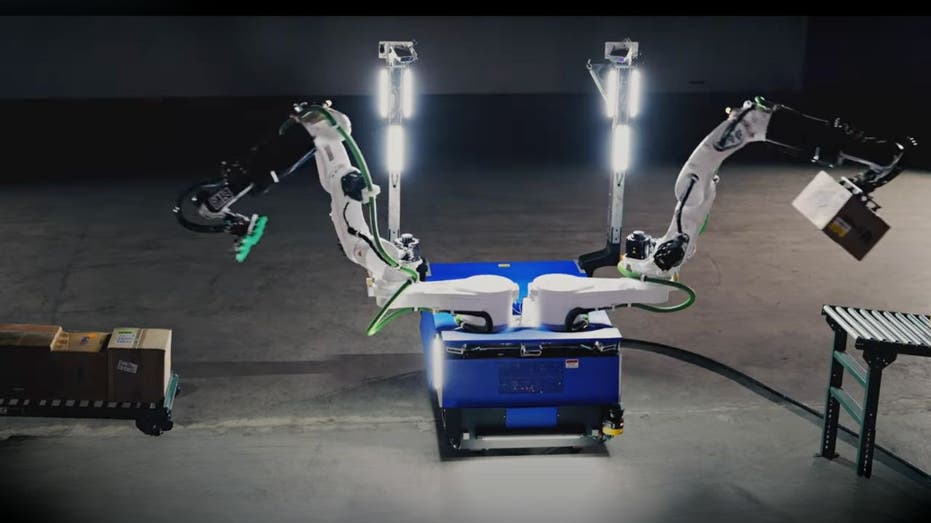- by foxnews
- 08 Apr 2025
I’m glad you’ve bought an electric vehicle. But your conscience isn’t clean | John Naughton
I’m glad you’ve bought an electric vehicle. But your conscience isn’t clean | John Naughton
- by theguardian
- 07 May 2023
- in technology

So you've finally taken the plunge and bought an electric vehicle (EV)? Me too. You're basking in the warm glow that comes from doing one's bit to save the planet, right? And now you know that smug feeling when you are stuck in a motorway tailback behind a hideous diesel SUV that's pumping out particulates and noxious gases, but you're sitting there in peace and quiet and emitting none of the above. And when the traffic finally starts to move again you notice that the fast lane is clear and you want to get ahead of that dratted SUV. So you put your foot down and - whoosh! - you get that pressure in the small of your back that only owners of Porsche 911s used to get. Life's good, n'est-ce pas?
Er, up to a point. True, there's nothing noxious coming out of your exhaust pipe, because you don't have one; and the electric motors that power your wheels certainly don't burn any fossil fuel. But that doesn't mean that your carbon footprint is zero. First of all, where did the electricity that charged that big battery of yours come from? If it came from renewable sources, then that's definitely good for the planet. But in most countries, at least some of that electricity came from non-renewable sources, maybe even - shock, horror! - coal-burning generating stations.
Even if all the charging energy came from renewable sources, you're still not in the clear. Your lovely new vehicle comes with a kind of embedded carbon debt. The factory that made it - the industrial plant that shaped and stamped and assembled all that steel and glass and plastic and rubber into a vehicle - emitted a lot of CO2 in the process. So you will have to drive a long way before the savings of CO2 that you would have emitted in driving the same distance in a fuel-burning car exceed the carbon emitted in its manufacture.
That doesn't mean that your EV wasn't a smart purchase, by the way - only that it's not as good as it looked at first sight. After the Tesla Model 3 hit American roads, Reuters commissioned a study to see how its overall carbon footprint compared with that of an equivalent conventional car - in this case a Toyota Corolla. The researchers were looking for the "break-even point" - where the EV began to be less environmentally damaging than the Toyota.
The results were instructive. The break-even point depended on the source of the electricity used to charge the Tesla. For one charged entirely by renewable energy, it was 8,400 miles; for cars charged using the average US electricity generation mix (23% coal-fired, plus other fossil fuels and renewables), break-even came at 13,500 miles; and for electricity coming entirely from coal-fired stations, it was a whopping 78,700 miles.
Sobering, isn't it. So the first lesson is that if you really want to minimise your EV's environmental damage, then charge it using electricity from renewable sources.
But carbon emissions are not the only way these vehicles impose a burden on the planet and its inhabitants. If you look at an EV, what you're really looking at is a giant skateboard with wheels at the four corners. The "board" is the battery, and it's huge. The composition of a typical battery (by weight) looks like this: lithium 3.2%, cobalt 4.3%, manganese 5.5%; nickel 15.7%; aluminium 18.9%; other materials 52.5%. Many of these materials have been mined, shipped around the world and put through complex chemical processing before being assembled into a battery. These processes all have carbon footprints, and quantifying them isn't easy, but they're certainly substantial.
The environmental costs of the battery supply are only part of the story, though. It also has a human toll. Take Nickel. About two-thirds of the world's supply comes from Indonesia, which is building nine new smelters to take advantage of the boom in demand. Local communities are understandably fearful of the impact of extraction and processing on their environment.
Then there's lithium, some of the largest current reserves of which are in the salt flats of Chile, Bolivia and Argentina. The metal is extracted by evaporating the basins' salt water, which threatens the limited water supplies and displaces local communities. So no free lunch there, either.
But worst of all is cobalt, which mostly comes from the Democratic Republic of Congo. According to the Washington Post 15% of that country's mining operations are in the "informal" (unregulated) sector, which employs upwards of 200,000 people (including thousands of children, some as young as six) working in unregistered and badly ventilated mines.
This is what the Post calls "the underbelly of electric vehicles". I would have added the adjective "dark" if I'd been composing the headline. It rather takes the shine off the EV bubble. These vehicles are innovative, enjoyable to drive and definitely play a role in reducing emissions. But it comes at a cost that we proud owners don't pay.
Blind to the problemA frightening essay in Time by Max Tegmark on the risks of humanity's indifference to the threat of AI.
Back to the futureNPR's website celebrates Mosaic, the first modern web browser, in a nostalgic article.
- by foxnews
- descember 09, 2016
Ancient settlement reveals remains of 1,800-year-old dog, baffling experts: 'Preserved quite well'
Archaeologists have recently unearthed the remarkably well-preserved remains of a dog from ancient Rome, shedding light on the widespread practice of ritual sacrifice in antiquity.
read more





